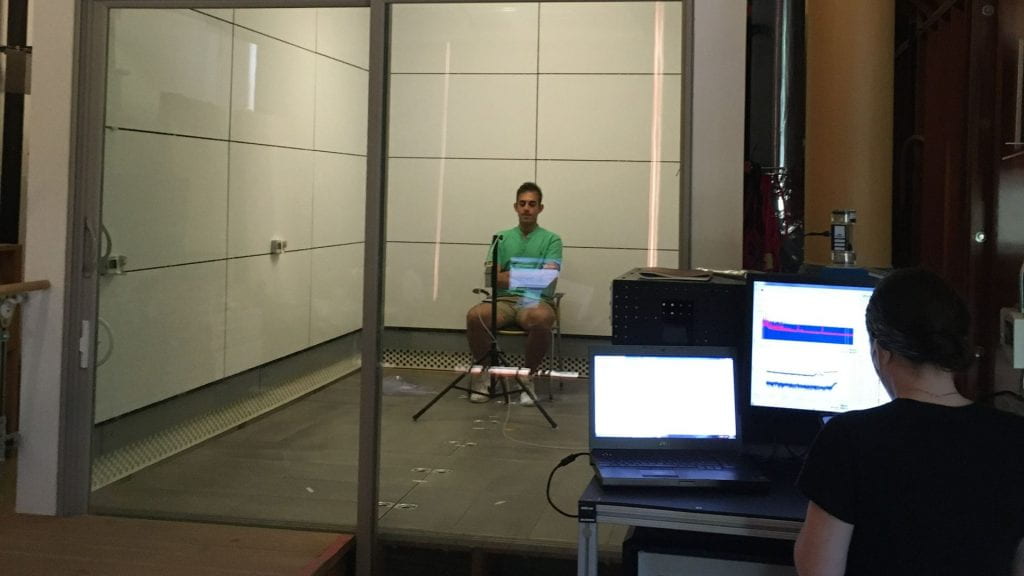It’s important to stay six feet apart, but eventually it stops mitigating disease transmission risk. Several studies suggest that transmission from a distance greater than six feet explains a significant number of COVID-19 superspreading outbreaks. Because of this, there is a need to quantify the ratio of exposures less than six feet from a source (near-field) and greater than six feet (far-field), which is currently considered social distancing. This quantification is key to better understanding human-to-human airborne infectious disease transmission and associated risks.

In our study, we used an environmentally-controlled chamber to measure volatile organic compounds (VOCs) released from a healthy participant who consumed breath mints which contained unique tracer compounds. Tracer measurements were made at 0.76 m (2.5 ft), 1.52 m (5 ft), 2.28 m (7.5 ft) from the participant, as well as in the exhaust plenum of the chamber.
By observing the concentration and spread of the tracer compounds over time, we found that for rooms with similar airflow parameters disease transmission risk is dominated by near-field exposures for shorter event durations (e.g., initial 20–25-minutes of event) whereas far-field exposures are critical throughout the entire event and are increasingly more important for longer event durations. That means the longer you stay in a space, the less effective social distancing is.
Additionally, our research shows a novel methodology for studying airborne bioaerosols using VOCs, in this case in breath mints, as proxies for airborne pathogens. This method can be used in future to estimate the benefits of alternate environmental conditions and occupant behaviors.
